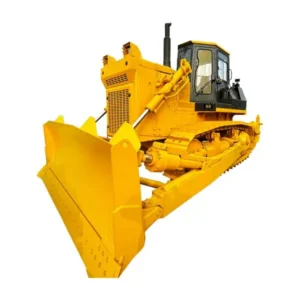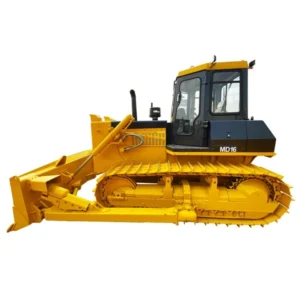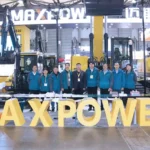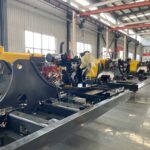Introduction
Small Dozer vs Skid Steer: Choosing the Right Equipment for Your Project.When it comes to earthmoving and construction projects, having the right equipment is crucial for efficiency and productivity. Two popular options for such tasks are small dozers and skid steers. Both machines offer unique capabilities and advantages that cater to different project requirements. In this article, we will compare and contrast small dozers and skid steers to help you make an informed decision about which equipment is best suited for your needs.
Table of Contents
- Understanding Small Dozers
- Exploring Skid Steers
- Size and Maneuverability
- Digging and Excavating Capabilities
- Pushing and Grading Performance
- Versatility and Attachments
- Cost Considerations
- Maintenance and Serviceability
- Environmental Impact
- Safety Features
- Case Studies: Real-World Applications
- Factors to Consider Before Making a Choice
- Conclusion
- FAQ
Understanding Small Dozers

Small dozers, also known as compact track loaders or mini bulldozers, are powerful machines designed for a wide range of earthmoving tasks. These versatile machines excel in grading, leveling, and moving materials over rough and uneven terrains. With their compact size and maneuverability, small dozers are ideal for navigating through tight spaces and confined areas where larger equipment may struggle to operate effectively.
Equipped with robust tracks, small dozers offer excellent traction and stability, allowing them to tackle challenging terrain conditions with ease. The front-mounted blade of a small dozer can be angled, tilted, or lifted, providing precise control for various earthmoving operations. Whether it’s pushing soil, gravel, or debris or creating level surfaces, small dozers deliver exceptional pushing and grading performance.
In the construction industry, small dozers are commonly used for site preparation, land clearing, and road construction projects. Their digging capabilities make them valuable assets for excavation work, such as creating trenches, foundations, or basements. Small dozers are also employed in landscaping projects, where they play a crucial role in shaping the land, creating slopes, and establishing a solid foundation for gardens, pathways, and other outdoor features.
Exploring Skid Steers
Skid steers, renowned for their versatility and agility, are compact machines that excel in a wide range of applications. These highly maneuverable vehicles are equipped with four wheels or tracks, allowing them to navigate through tight spaces and challenging terrains with ease. Skid steers are popular in industries such as construction, agriculture, landscaping, and snow removal, where their adaptability is greatly valued.
One of the key advantages of skid steers is their ability to quickly interchange attachments. With a robust quick-attach system, operators can swiftly switch between various tools and implements, expanding the capabilities of the machine for different tasks. From buckets and forks to augers, sweepers, and hydraulic breakers, skid steers can accommodate a diverse range of attachments, making them incredibly versatile and efficient.
In the construction industry, skid steers are employed for material handling, excavation, and demolition tasks. With the appropriate attachment, these machines can efficiently move and transport materials, such as soil, gravel, or construction debris. Skid steers equipped with hydraulic breakers are capable of demolishing concrete structures, while augers allow for easy drilling of holes for posts or foundations.
Size and Maneuverability
Size and maneuverability are crucial factors to consider when comparing equipment options for your project. In terms of size, skid steers have a distinct advantage over small dozers. Skid steers are compact machines, designed to operate efficiently in tight spaces and confined areas where larger equipment may face limitations. Their smaller footprint allows them to maneuver through narrow pathways, doorways, and congested job sites with ease.
The compact size of skid steers also enables them to navigate around obstacles and work in areas where access is restricted. This makes them particularly suitable for projects that require working in urban environments or confined spaces where larger machinery would struggle to operate effectively.
On the other hand, while small dozers are smaller than their larger counterparts, they are still larger and less maneuverable compared to skid steers. This makes them more suitable for projects where space is not a constraint and where their additional size and power can be fully utilized.
Furthermore, skid steers offer exceptional maneuverability due to their unique steering mechanism. By independently controlling the speed and direction of the left and right wheels or tracks, skid steers can perform zero-radius turns, allowing them to navigate with precision and efficiency in confined areas. This maneuverability is especially beneficial in situations that require frequent changes in direction or intricate movements.
In contrast, small dozers typically have a traditional steering system where both tracks move together, limiting their maneuverability in comparison to skid steers. However, small dozers compensate for this with their excellent traction and stability provided by the tracks, allowing them to operate effectively on uneven terrain and slopes.
Digging and Excavating Capabilities
Digging and excavating capabilities are critical considerations when choosing between a small dozer and a skid steer for your project. Small dozers are well-known for their robust digging capabilities, making them the preferred choice for tasks that require extensive excavation work.
With their powerful engines and sturdy construction, small dozers can handle heavy-duty digging tasks with ease. Whether you need to create trenches, foundations, or basements, small dozers can efficiently break through soil and other materials. Their larger size and weight provide added stability and digging force, allowing them to tackle more demanding excavation projects.
Small dozers typically feature a front-mounted blade that can be lowered to dig into the ground. The blade’s design, combined with the machine’s power, enables effective penetration and excavation. These machines excel in tasks such as site preparation, land clearing, and bulk earthmoving, where substantial digging is required.
On the other hand, while skid steers are not primarily designed for heavy excavation, they can still perform light digging tasks. Skid steers equipped with buckets or augers can handle smaller-scale digging operations, such as digging post holes or minor trenching. However, it’s important to note that skid steers may not have the same level of efficiency or power as small dozers when it comes to extensive excavation work.
When evaluating your project’s digging and excavating needs, consider the scale and complexity of the tasks involved. If you have significant excavation requirements, such as large-scale trenching or foundation excavation, a small dozer would be the more suitable choice due to its dedicated digging capabilities and power.
However, if your project involves primarily light digging tasks or a combination of tasks that require both digging and versatility, a skid steer may offer sufficient capability. Skid steers can still contribute to excavation work, especially in situations where their maneuverability and versatility are valuable alongside the digging requirements.
Pushing and Grading Performance
Pushing and grading performance are important aspects to consider when comparing small dozers and skid steers for your project. Both machines offer unique capabilities in these areas, and understanding their differences can help you make an informed decision.
Small dozers excel in pushing and grading tasks due to their larger size and heavier weight. These machines are designed to handle substantial amounts of material and create smooth, level surfaces. The front-mounted blade of a small dozer allows for efficient pushing and grading operations, whether it’s moving soil, gravel, or other materials. The power and stability of small dozers enable them to handle demanding grading tasks with precision and effectiveness.
When it comes to pushing and grading, skid steers can also perform these tasks, but on a smaller scale. Skid steers are better suited for smaller projects that require more agility and maneuverability. They can effectively move and distribute materials, but their smaller size and lighter weight limit the amount of material they can push compared to small dozers. Skid steers are particularly useful in situations where a compact machine is needed to navigate tight spaces while still being able to push and grade materials effectively.
Additionally, it’s important to consider the attachments available for each machine. Skid steers have a wide range of attachments that can enhance their pushing and grading capabilities. Attachments such as grapple buckets or dozer blades can be utilized to increase the pushing force and grading precision of a skid steer. Small dozers, on the other hand, are primarily designed for pushing and grading, and their attachments may be more focused on optimizing those specific tasks.
Versatility and Attachments
Versatility and attachments are key factors to consider when comparing small dozers and skid steers for your project. Both machines offer different levels of versatility, and understanding their attachment options can help you determine which equipment is best suited for your needs.
Skid steers are renowned for their exceptional versatility. They feature a quick-attach system that allows for easy and efficient swapping of attachments. This versatility enables skid steers to perform a wide range of tasks beyond their primary function. Whether you need to handle materials, excavate, lift, sweep, or even drill, skid steers can accommodate various attachments to suit different applications.
The attachment options for skid steers are vast and include buckets, forks, augers, trenchers, grapples, brush cutters, hydraulic breakers, and more. The quick-attach system allows operators to switch between attachments quickly, maximizing efficiency and productivity on the job site. This adaptability makes skid steers well-suited for projects that require flexibility and the ability to perform multiple tasks without the need for additional specialized equipment.
In contrast, small dozers have more limited attachment options. While they are primarily designed for pushing, grading, and leveling, some small dozers may offer additional attachments such as rippers or winches. These attachments can enhance the machine’s capabilities for specific tasks, but they may not have the same level of versatility as skid steers.
Cost Considerations
Cost considerations play a significant role in the decision-making process when choosing between small dozers and skid steers for your project. It’s important to evaluate both the initial purchase price and the long-term costs associated with each machine to make an informed decision.
In terms of the initial purchase price, skid steers generally have an advantage over small dozers. Skid steers tend to be more affordable, making them a cost-effective option, especially for smaller-scale projects or those with budget constraints. The lower initial cost of skid steers allows for greater flexibility in allocating resources for other project needs.
However, when considering the long-term costs, it’s essential to take into account various factors beyond the initial purchase price. Maintenance, fuel consumption, attachment expenses, and overall project budget should all be considered.
Maintenance requirements for both small dozers and skid steers include regular servicing, inspections, and parts replacements. While the maintenance needs may differ between the two machines, it’s important to follow the manufacturer’s guidelines and recommendations to ensure optimal performance and longevity. It’s also worth considering the availability and cost of replacement parts for each machine when evaluating long-term maintenance expenses.
Fuel consumption is another aspect to consider. Skid steers are generally known for their efficient fuel usage, which can result in lower operating costs compared to small dozers. However, the fuel efficiency of each machine can vary depending on factors such as engine size, workload, and operating conditions. It’s important to assess the specific fuel requirements of your project and estimate the long-term fuel expenses accordingly.
Attachments are an additional cost consideration. Skid steers offer a wide range of attachments that can be purchased or rented for specific tasks. The cost of acquiring or renting attachments should be factored into the overall project budget. Small dozers, with their more limited attachment options, may have lower attachment expenses, but it’s essential to evaluate whether the available attachments meet your project’s requirements.
Maintenance and Serviceability

Maintenance and serviceability are crucial factors to consider when comparing small dozers and skid steers for your project. Ensuring the proper upkeep and timely servicing of your equipment is essential for its optimal performance, longevity, and minimizing downtime.
Both small dozers and skid steers require regular maintenance to keep them operating at their best. Maintenance tasks typically include routine inspections, lubrication, filter replacements, and addressing any potential issues promptly. Following the manufacturer’s recommended maintenance schedule is essential to ensure that the machines are well-maintained and to prevent any major breakdowns or failures.
In terms of serviceability, skid steers often have an advantage. Their design often allows for easier access to various components, making routine maintenance tasks more convenient. Operators and maintenance personnel can quickly access engine compartments, hydraulic systems, and other critical areas for inspection, cleaning, or repairs. This accessibility can contribute to shorter maintenance times and reduced downtime, maximizing the machine’s productivity.
Small dozers, while still serviceable, may have a slightly more complex maintenance routine due to their tracks and additional components. However, manufacturers often provide comprehensive maintenance guidelines and support to ensure that operators and maintenance personnel can effectively service the machines. Following these guidelines and addressing any issues promptly will help keep small dozers in optimal condition.
It’s important to emphasize the significance of proactive maintenance and prompt servicing. Regularly inspecting the equipment, identifying and addressing any potential issues early on, and adhering to the recommended maintenance schedule can significantly reduce the risk of unexpected breakdowns or costly repairs. It’s also essential to use high-quality replacement parts and lubricants as recommended by the manufacturer to maintain the machine’s reliability and performance.
Additionally, proper operator training is essential for maintaining equipment performance and safety. Operators should receive comprehensive training on machine operation, maintenance protocols, and safety procedures. This ensures that they understand the equipment’s capabilities, limitations, and how to identify and report any potential maintenance issues.
Environmental Impact
Environmental impact is an important consideration when selecting equipment for your project. Both small dozers and skid steers have implications in terms of their environmental footprint, particularly regarding fuel consumption and emissions.
Small dozers and skid steers typically run on diesel fuel, which contributes to greenhouse gas emissions. However, it’s worth noting that newer models of both machines often incorporate advanced engine technology that meets stringent emissions standards. These advancements help reduce the environmental impact by minimizing the release of harmful pollutants into the atmosphere.
Skid steers, in particular, are known for their fuel efficiency. Their compact design and efficient engines result in lower fuel consumption compared to larger equipment. This increased fuel efficiency not only reduces the overall environmental impact but also translates into potential cost savings in fuel expenses.
It’s essential to consider the specific emissions standards and regulations in your region when assessing the environmental impact of the equipment. Adhering to local emissions standards ensures compliance with environmental regulations and contributes to sustainable practices.
Safety Features
Safety should be a top priority on any worksite. Both small dozers and skid steers come with safety features designed to protect operators and those around them. These may include rollover protection structures (ROPS), seat belts, backup alarms, and ergonomic controls. However, it’s crucial to educate operators about safe operating practices and ensure compliance with safety regulations.
Case Studies: Real-World Applications
To provide a better understanding of how small dozers and skid steers are used in real-world scenarios, let’s explore a few case studies:
Landscaping Project: A small dozer proves invaluable in grading and leveling a large outdoor area, preparing it for landscaping features such as gardens and pathways.
Construction Site: Skid steers are utilized for their agility and versatility in a construction site, where they handle various tasks like material handling, digging trenches, and demolishing structures.
Snow Removal: Skid steers equipped with snow blowers or plows are highly effective in clearing snow from roads, parking lots, and sidewalks.
Factors to Consider Before Making a Choice
Before deciding between a small dozer and a skid steer, consider the following factors:
Project Requirements: Evaluate the specific tasks and applications required for your project.
Space Constraints: Assess the available workspace and consider maneuverability requirements.
Attachments: Determine the need for versatility and the range of attachments required.
Budget: Consider the initial purchase price, long-term costs, and overall project budget.
Operator Skill Level: Evaluate the skill level and experience of the operators who will be using the equipment.
Conclusion: Small Dozer vs Skid Steer
Choosing the right equipment between a small dozer and a skid steer depends on the unique demands of your project. Small dozers excel in heavy-duty excavation and pushing tasks, while skid steers offer unmatched versatility and maneuverability in tight spaces. Assess your project requirements, budget, and other essential factors before making a decision. By selecting the most suitable equipment, you can enhance productivity, efficiency, and overall project success.
FAQ
Q: Are small dozers and skid steers suitable for residential projects?
A: Yes, both machines can be used for residential projects depending on the specific tasks involved. Small dozers are more suitable for extensive grading and excavation, while skid steers are versatile for various tasks like landscaping and material handling.
Q: Can skid steers replace small dozers entirely?
A: Skid steers canperform some tasks that small dozers can handle, but they may not fully replace small dozers in all scenarios. Small dozers are more powerful and efficient for heavy-duty excavation and pushing tasks.
Q: Which machine is easier to operate, a small dozer or a skid steer?
A: Skid steers are generally easier to operate due to their intuitive controls and maneuverability. Small dozers require some skill and experience to handle effectively.
Q: Can attachments be shared between small dozers and skid steers?
A: No, attachments are not interchangeable between small dozers and skid steers. Each machine has its own specific attachment system.
Q: How can I ensure the safety of operators when using small dozers or skid steers?
A: Ensure that operators receive proper training on equipment operation and safety protocols. Regularly inspect the equipment for any potential hazards, and enforce strict adherence to safety guidelines and regulations.









-150x150.webp)
